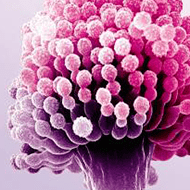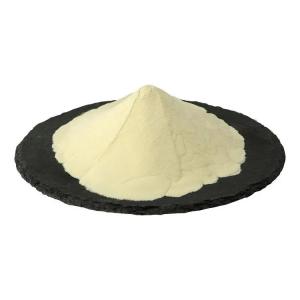Phosphatidyl serine is part of fruit-flavored chews.
Time:2025-08-15Phosphatidylserine (often abbreviated as PS) is a naturally occurring phospholipid found in cell membranes, particularly abundant in the brain and nervous tissue. In recent years, it has become a valued functional ingredient in the formulation of various dietary products. Among these, fruit-flavored chews have emerged as a convenient and appealing delivery format for phosphatidylserine, combining functional ingredients with enjoyable taste and texture.
Chemical and Physical Characteristics
Phosphatidylserine is a glycerophospholipid consisting of a glycerol backbone, two fatty acid chains, a phosphate group, and the amino acid serine. It appears as a fine to off-white powder when isolated and is typically sensitive to oxidation. In product formulations, it is often stabilized with protective packaging or antioxidants to preserve its quality and shelf life. Its solubility in fats and certain emulsions makes it adaptable for incorporation into chewable formats.
Formulation in Fruit-Flavored Chews
Integrating phosphatidylserine into fruit-flavored chews involves balancing stability, taste, and texture. Manufacturers typically encapsulate PS or blend it with other lipids to protect it during processing. The chew base, often composed of gelatin, pectin, or starch, is combined with sweeteners, natural fruit flavors, and sometimes natural colors to create an appealing sensory profile. Care is taken to maintain the soft yet cohesive texture that characterizes chewable confections.
Processing Considerations
The production process generally involves:
Preparation of the chew base – Hydrating and cooking gelatin or pectin with sweeteners and syrups.
Incorporation of phosphatidylserine – Adding PS at controlled temperatures to avoid degradation.
Flavoring and coloring – Mixing in natural fruit flavors (e.g., strawberry, mango, or citrus) and colorants for visual appeal.
Molding and setting – Pouring into molds or shaping into bite-sized pieces before cooling.
Packaging – Using airtight, light-resistant packaging to prevent oxidation and maintain freshness.
Advantages of the Chew Format
Fruit-flavored chews offer a convenient, portable, and enjoyable way to incorporate phosphatidylserine into the diet. The format is particularly suitable for consumers who prefer alternatives to capsules or powders, and the pleasant taste masks any natural flavor notes of PS. Additionally, chews can be designed in various shapes, colors, and flavors to appeal to different age groups.
Applications and Market Trends
Phosphatidylserine-infused fruit chews are found in the functional food and nutraceutical markets, often positioned alongside other cognitive and wellness-supporting products. Increasing consumer interest in convenient and flavorful supplementation options has contributed to the popularity of such formulations. Innovations in encapsulation and stabilization continue to enhance the shelf life and sensory qualities of these products.
Conclusion
The incorporation of phosphatidylserine into fruit-flavored chews demonstrates how functional ingredients can be delivered in enjoyable, easy-to-consume formats. Through careful formulation and processing, manufacturers can ensure stability, appealing taste, and product consistency, meeting the growing demand for functional foods that combine science with sensory enjoyment.


 CN
CN





